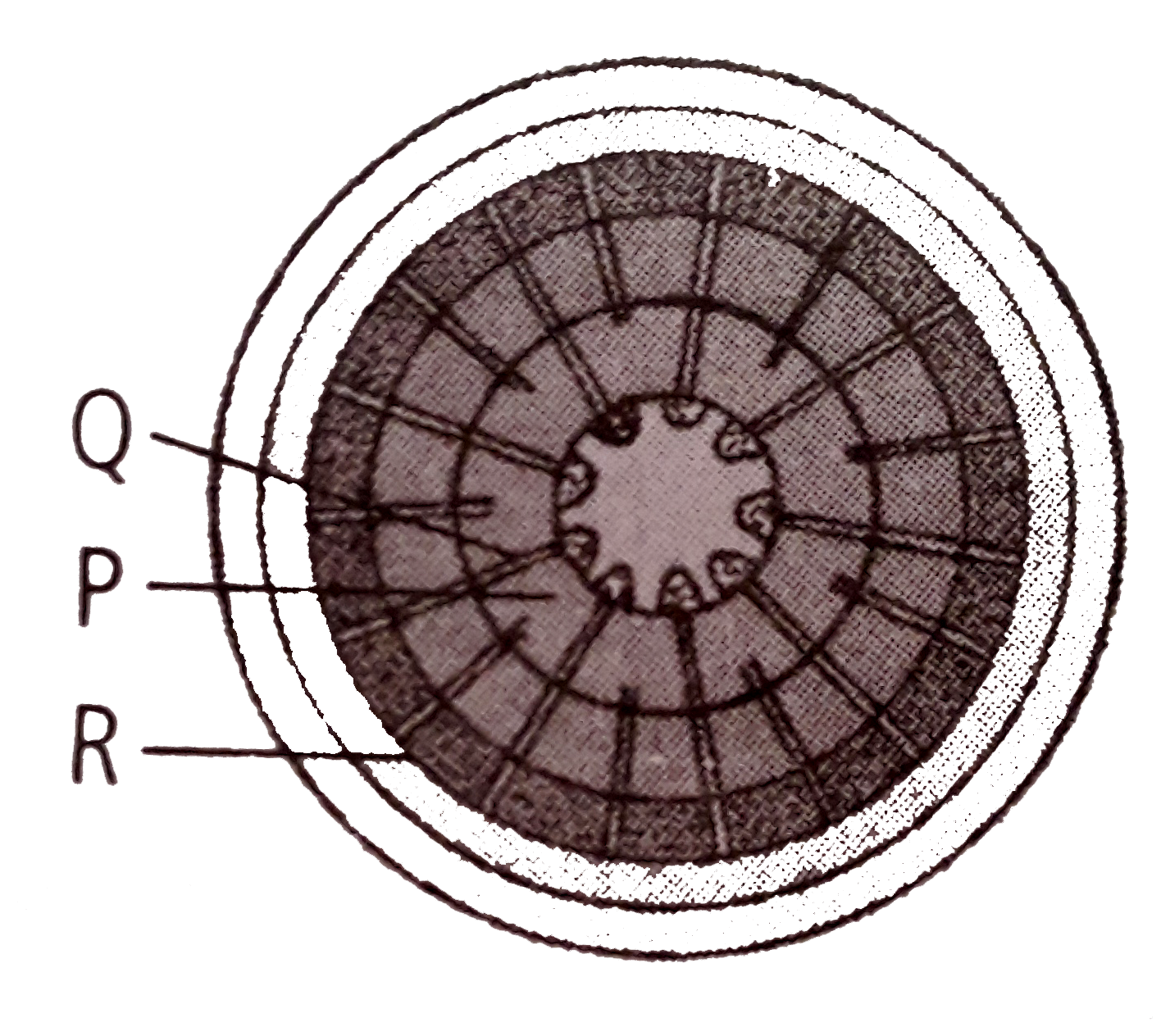Cells of vascular cambium divide
transversely only
periclinally both on outer and inner side
perclinally on outer side only
anticlinally only
The correct Answer is:B
Step-by-Step Solution:
1. Understanding Vascular Cambium:
- Vascular cambium is a type of lateral meristem found in plants. It is responsible for the secondary growth of stems and roots by producing new vascular tissues.
2. Division of Vascular Cambium Cells:
- The cells of the vascular cambium divide to produce two types of tissues: phloem (which transports nutrients) on the outer side and xylem (which transports water) on the inner side.
3. Types of Cell Division:
- The division of vascular cambium cells can occur in different planes:
- Periclinal Division: This is when the cells divide parallel to the surface of the stem. This type of division increases the number of layers of cells and contributes to the growth of xylem and phloem.
- Anticlinal Division: This is when the cells divide perpendicular to the surface of the stem. This type of division increases the circumference of the cambium but does not contribute directly to the formation of new xylem or phloem.
4. Active Division:
- The vascular cambium divides more actively on the inner side (producing more xylem) than on the outer side (producing less phloem).
5. Conclusion:
- Based on the above understanding, the correct answer to the question is that the cells of vascular cambium divide periclinally both on the outer and inner side.
Final Answer:
- Option B: Periclinally both on outer and inner side.
---
- Vascular cambium is a type of lateral meristem found in plants. It is responsible for the secondary growth of stems and roots by producing new vascular tissues.
- The cells of the vascular cambium divide to produce two types of tissues: phloem (which transports nutrients) on the outer side and xylem (which transports water) on the inner side.
- The division of vascular cambium cells can occur in different planes:
- Periclinal Division: This is when the cells divide parallel to the surface of the stem. This type of division increases the number of layers of cells and contributes to the growth of xylem and phloem.
- Anticlinal Division: This is when the cells divide perpendicular to the surface of the stem. This type of division increases the circumference of the cambium but does not contribute directly to the formation of new xylem or phloem.
- The vascular cambium divides more actively on the inner side (producing more xylem) than on the outer side (producing less phloem).
- Based on the above understanding, the correct answer to the question is that the cells of vascular cambium divide periclinally both on the outer and inner side.
- Option B: Periclinally both on outer and inner side.
Topper's Solved these Questions
Similar Questions
Knowledge Check

During the secondary growth in a dicotyledonous stem, the fusiform initials of vascular cambium give rise to which of the given labelled part?APBRCQDboth a and bIn______vascular bundle, a strip of vascular cambium is present in between the xylem and phloem.
AopenBclosedCendarchDexarch
Assertion (A) Secondary growth in dicot roots occur with the help of vascular cambium and phellogen.
Reason (R ) Vascular cambium is formed from conjuctive parenchyma and part of pericycle.
View Solutionvascular cambium of stem is
View Solutionvascular cambium of stem is
View SolutionSeasonal activity of vascular cambium is influenced by many factors, except
View SolutionVascular cambium is absent
View SolutionSimple tissue that is not formed from vascular cambium is
View Solution
